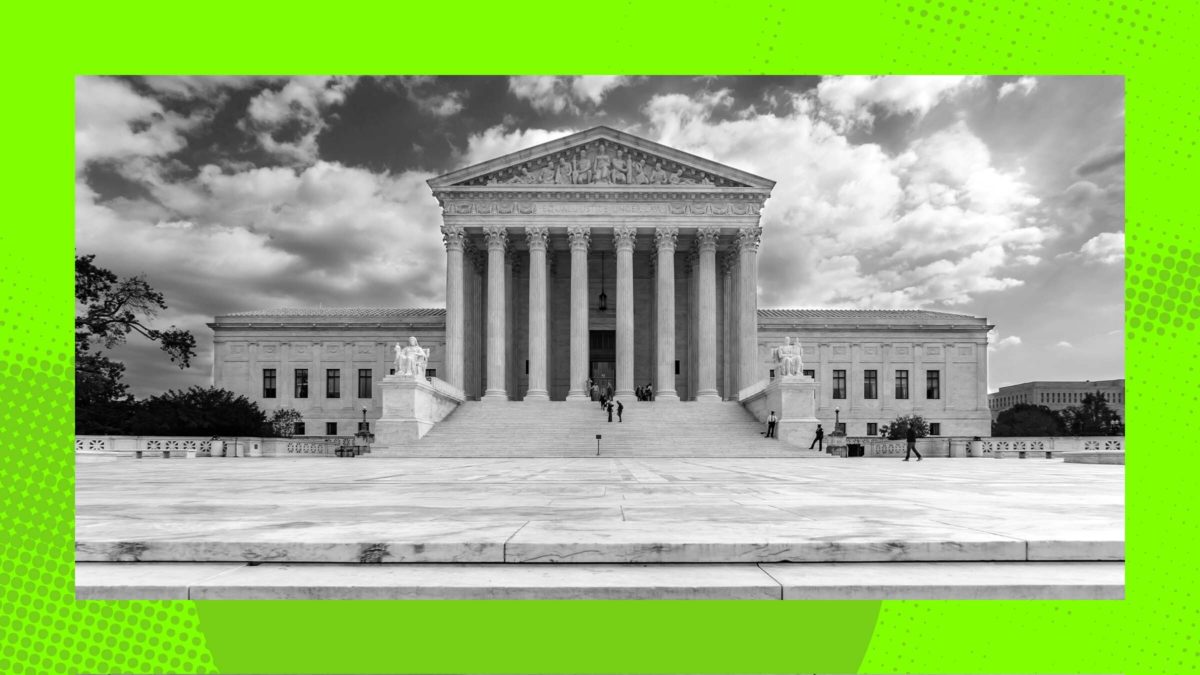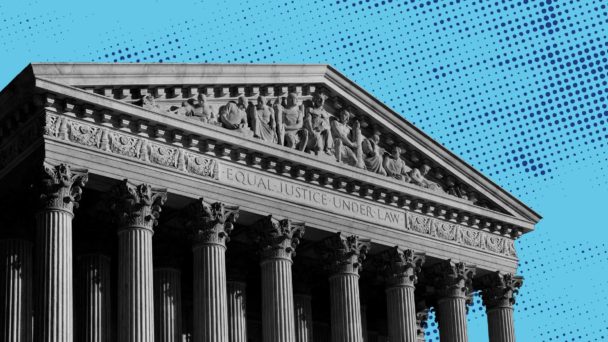Editor’s note: This month, we’ll be taking a closer look at some of the most consequential cases the Supreme Court—the most conservative Supreme Court in a century—will decide in its upcoming term. Today: Sackett v. EPA, a case about whether the people best suited to enforce federal environmental statutes are EPA scientists or, uh, Sam Alito.
Differentiating between “water” and “land” seems simple to the untrained eye. But as ecologists know, there are many places—swamps, marshes, wetlands—that are neither fully aquatic nor dry land, but are still vital parts of the country’s waterways. Next week, the Supreme Court will hear lawyers from the Pacific Legal Foundation (PLF), the oldest conservative “public interest” legal nonprofit, make the case that the justices, not scientists at the Environmental Protection Agency, are best suited to make these distinctions.
The Sacketts, an Idaho couple who have been fighting the EPA for 15 years to build their family home on a soggy lot near Priest Lake, make for sympathetic challengers to the status quo. But it’s no accident that PLF ended up with this case; although public reporting of PLF’s donors is incomplete, Koch brothers-affiliated groups and the Exxon/Mobil Foundation are among the organizations that have reportedly donated to the group. Together, they are asking the Court to limit the EPA’s authority over different kinds of wetlands because of the agency’s “horrible track-record” in issuing clear rules on the issue. According to PLF and the Sacketts, if the EPA can’t handle the responsibility of policymaking, the Court shouldn’t bother waiting for it (or for Congress) to try, and should instead step in and make the decision itself.
The Sackett family’s legal trouble began in May 2007, when a neighbor complained after they filled a lakeside lot they had purchased three years earlier. The EPA inspected the property and informed the Sacketts that, sure enough, their lot included wetlands protected by the Clean Water Act (CWA), which Congress passed in 1972 “to restore and maintain the chemical, physical, and biological integrity of the Nation’s waters.” According to a July 2008 EPA memo, the wetlands on which the Sacketts’ property lies is “especially important in maintaining the high quality of Priest Lake’s water, fish, and wildlife.” In November, the EPA ordered the Sacketts to remove the gravel and restore the wetlands by the following May or face a fine of $40,000 a day.
The next year, the Sacketts, with the aid of PLF lawyers, challenged the EPA order in federal court. A district court judge and then the Ninth Circuit Court of Appeals both sided with the EPA, finding that the wetlands on the lot are “adjacent to a traditional navigable body of water”—Priest Lake—and thus under the agency’s jurisdiction. The Sacketts then appealed to the Supreme Court.
At issue now is the future of the Clean Water Act regulation that defines “waters of the United States.” Right now, the EPA is using the rule it wrote after the Court’s 2006 decision in Rapanos v. United States, in which a plurality of the Court couldn’t decide if wetlands separated from a river by a man-made ditch qualified as “adjacent to” covered waters. (PLF was also behind that challenge.)
The EPA has since sought to rewrite that rule, but is still using the old one after an Arizona district court vacated a narrower Trump-era proposal last year. The EPA is still working on a rule to replace it, but the Sacketts and their allies don’t want to wait. Already, the Chamber of Commerce has threatened litigation over future agency rulemaking, claiming that the rule is “likely to meet the same obstacles that stymied the previous regulations,” and that the Court’s intervention is therefore necessary.
The stakes of this case go well beyond the future of the Sackett residence. Pro-development organizations have filed briefs supporting the Sacketts, arguing for a world where they can build with even less government interference. The National Association of Homebuilders, for example, complains that “everchanging rules make it more costly for developers to purchase and develop land and these costs make it difficult to provide homes that the public can afford.” The EPA, meanwhile, argues in its brief that if the Sacketts are allowed to fill in their wetlands, “the same scene will play out across the country, severely weakening the Act’s protections for adjacent wetlands” and “thwart[ing] Congress’s comprehensive pollution-control regime.”
It wasn’t so long ago that courts took seriously the division of labor between themselves and agencies in rulemaking. In INS v. Orlando-Ventura in 2002, for example, the Court wrote that when courts of appeal strike down an agency decision, they should still return the matter to the agency to make decisions about matters that “statutes place primarily in agency hands.”
But the conservative legal movement has long had its eye on reducing the power of the administrative state. Sackett is its biggest ask yet: to take rulemaking authority from an executive agency and offer it to sympathetic judges instead. A decision that sides with the Sacketts will further incapacitate the EPA—and free developers to fill in as many wetlands as they want.




